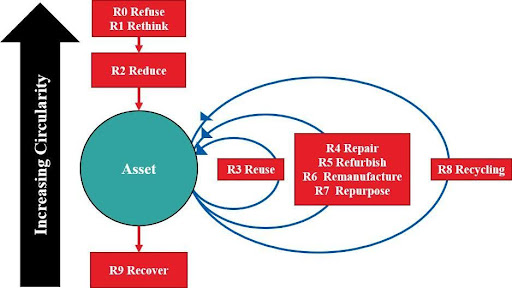Wednesday 24 July 2024
Circular Economy Principles (CEP) aren’t used across all built environment projects, with this also true for one of the planet’s most precious resources, water. At present the built environment often disrupts nature’s own circularity processes for water, adding to risks from flooding and water pollution. In this guest Thought Leadership piece written by World Green Building Council (WorldGBC) partners Arup, find out more about the barriers to implementing CEP to water within the built environment, and how to overcome these. Arup also explores why businesses should be motivated to embrace water circularity, elucidating the immense potential of Circular Water Economy (CWE) to unlock value for those who embed it in their processes.
Ahead of World Water Week, 25—29 August 2024, many of us in the built environment ecosystem will be asking ourselves: how can we embed water circularity into our projects to manage water more effectively? Find out more below.
What is the value of circular economy?
Economic
- $4.5 trillion of value could be unlocked by implementing circular principles across the world. (1)
Social
- Implementing circular economy principles in the EU alone could unlock 2.5 million net additional jobs by 2030. (2)
Environmental
- Efficient use of just cement, steel, plastics and aluminium could reduce greenhouse gas emissions by 40%. (3)
As explored in WorldGBC’s paper ‘Building a water-resilient future for everyone, everywhere’, the built environment is putting increasing pressure on often already overburdened water resources on a global scale.
Water is locked away in the world’s construction materials, polluted by construction practices, and plentiful water sources are now depleted due to the increase in impermeable surface area from expanding cities.
Today’s world is founded on linear models of resource use, described as ‘take, make, waste’ — taking resources out of the supply chain, using them in the development of goods and services, and then disposing of the resources as waste. This results in significant loss of value across economic, environmental, social, and political dimensions.
Circular economy principles offer a transformative solution to unlock the lost value from resources, in this case for water, and embed a more sustainable attitude approach. The ‘Circular Water Economy’ applies CEP to water as a resource, and promotes circularity strategies such as rainwater harvesting, nature-based solutions, and nutrient recovery from wastewater. CWE treats water as a stressed resource, seeking all opportunities to reduce water consumption, reuse water effluent and nutrients, and regenerate water sources.
External organisations are also pressing for integration of sustainable water principles, with the UN Sustainable Development Goal 6 (SDG6), for example, explicitly addressing water use through its ‘Water Use Efficiency indicator’.
Additionally, the EU’s new Corporate Sustainability Reporting Directive mandates companies in the EU and some non-EU companies trading in the EU to report on their water resource management practices and reduction efforts.

The Ellen MacArthur Foundation (EMF) proposes a framework known as ReSOLVE to find value at all scales of the built environment from supply chain through to use. Comprised of six principles: Regenerate, Share, Optimise, Loop, Virtualise, and Exchange, this framework provides distinct avenues for unlocking value.
This can look like reductions in Scope 3 carbon emissions through reduced or recycled water use in office spaces, fostering environmental and social benefits from integration of Sustainable Urban Drainage Systems (SuDS) into communities, or realising economic value from the sale of surplus water-intensive materials into the supply chain.
By focusing on water in the built environment, decision-makers can explore the opportunities to generate value from each principle.
Below are the kinds of questions organisations could ask themselves for each ReSOLVE principle to identify circular water opportunities in their businesses. Tools like the ReSOLVE framework along with measurement frameworks for water footprints could be adapted to built environment organisations to how to integrate CWE approaches into their practices.
Regenerate:
Share:
Optimise:
Loop:
Virtualise:
Exchange:
When considering the business case for Circular Water Economy it is good to identify all the barriers so far to investment in circularity, and how to overcome these.
Arup’s factsheet ‘Unlocking the Business Case for Circular Water Economy’, which is due for publication later this year, explores the socio-cultural, economic, technological, and legislative barriers to developing a CWE for built environment organisations. These include:
Considering these barriers and turning them into opportunities is essential for unlocking value from circularity and integrating circular principles into business practices.
Businesses should ensure they are asking themselves questions aimed at tackling the barriers to circular economy implementation, and unlocking opportunities through applying the ReSOLVE framework. In doing so we can foster innovative approaches for capturing value that might otherwise go untapped.
Global partnerships, exemplified by organisations like the WorldGBC, provide an avenue for practical action in creating a genuine circular water economy through collaboration, knowledge exchange, and shared values. Reflecting on our processes and seizing opportunities is the initial stride toward a truly circular world.
WorldGBC’s paper ‘Building a water-resilient future’ outlines the role of the building and construction sector in tackling the global water crisis.
Download Arup’s factsheet ‘Unlocking the Business Case for Circular Water Economy’ here.